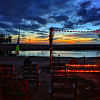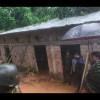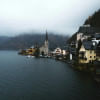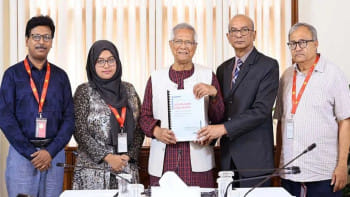The splendour of Sylhet

Nestled in the picturesque Surma Valley amidst scenic tea plantations and lush green tropical forests, Sylhet is blessed with several picturesque places of interests. With easy connectivity by rail, road, and air from Dhaka, it has been a prime tourist destination.
Located on the bank of the Surma River, Sylhet is one of the oldest cities in Bangladesh, having a vast historical and cultural background. Originally part of the Bengal Presidency and later Eastern Bengal and Assam; Sylhet was part of Colonial Assam between 1874 and 1947 when, following a referendum and the partition of British India, it then became part of the then East Pakistan.
Sylhet plays a vital role in the economy of Bangladesh and is home to some of the largest natural gas fields and tea plantations. The geography of Sylhet consists mainly of hills, and a few large natural water bodies known locally as "haors." During winter, these haors are vast stretches of green land, but in the rainy season, they turn into turbulent seas. These haors provide a sanctuary to the millions of migratory birds who fly from Siberia across the Himalayas to avoid the severe cold there. One such Haor, the Hakaluki Haor is a popular tourist destination, covering Barlekha Upazila of Moulvibazar District and Fenchuganj and Golapganj Upazila of Sylhet District.
As we left the airport, we were overcome by the scenic landscape of the Malnicherra Tea Estate. Established by Lord Hurdson, with commercial cultivation of tea beginning in the Malnicherra Estate in 1849, this is considered as one of the oldest and largest tea gardens in the subcontinent.
During our visit, we decided to take a city tour. The city is described as the "City of Saints," with the Holy shrine of Hazrat Shah Jalal (R) and Hazrat Shah Paran (R) located at heart of the city. We first visited both the Dargah and offered prayers.
We then stopped at Jitu Miar Bari, an architectural garden palace in the heart of the city. The elegant white painted mansion amidst manicured garden speaks of the glorious past.
Our next destination was the Keane Bridge located over the Surma River, one of the most recognisable landmarks of Sylhet.

Built in 1936, the iron bridge is named after Sir Michael Keane, who was the English Governor of Assam from 1932 to 1937. The century-old bridge, unable to bear any significant weight, is now relegated to pedestrians and rickshaws. During the Liberation War, the bridge was blown off with dynamite by the Pakistan Army and severely damaged.
Nearby is the Ali Amjad Clock, the oldest clock tower of Bangladesh, located on the bank of the Surma River. It is locally known as "Ghori Ghar." The tower was constructed in 1872 by Ali Amjad's father, Nawab Moulvi Ali Ahmed Khan, just two years before he was born.
We set off in the morning for an hour-long drive from Sylhet to reach Sreemangal, "The land of two leaves and a bud." Famous for some of the largest tea gardens, covered by lush green carpet, Sreemangal has been nicknamed the "tea capital of Bangladesh," due to the number of tea gardens in the area, and is the place of origin of the Seven Colour Tea. Bangladesh produces and exports large quantity of high-quality tea every year. On the way, we witnessed the mesmerising terraced tea gardens, pineapple, rubber and lemon plantations. On entering the tea estates, we were blown away by the rich aroma of the tea leaves and saw women in colourful attire plucking leaves. We later settled for a sumptuous lunch at a local restaurant much to our gastronomic delight.
We also visited Tamabil and Jaflong, popular tourist destinations on the Sylhet-Shillong Road, an hour's drive from Sylhet. Situated amidst splendid panorama, Tamabil is a border outpost. On the way, several waterfalls across the border provided enchanting views. With the forested mountainous backdrop and streams of clear waters flowing with thousands of rolling stones littered from nearby mountains, Jaflong offered a perfect postcard view amidst tea gardens.

Our next destination was the Ratargul, a freshwater swamp forest located in the Gowain River, about 30 kilometres from Sylhet. It is dubbed as the Second Sundarban. On reaching the bank of the river, we availed a 20-minute boat ride that would bring us to Ratargul. A small walk up the hill and we were then astounded by the captivating beauty of the surroundings. We took an hour-long boat cruise through the lake. Many of the trees appeared like grottos in the middle of the water bodies, thus providing a magnificent view. Calm, tranquil, enveloped in green foliage, with the chirping of local birds, the entire ambience was simply mind-blowing.

 For all latest news, follow The Daily Star's Google News channel.
For all latest news, follow The Daily Star's Google News channel. 







Comments